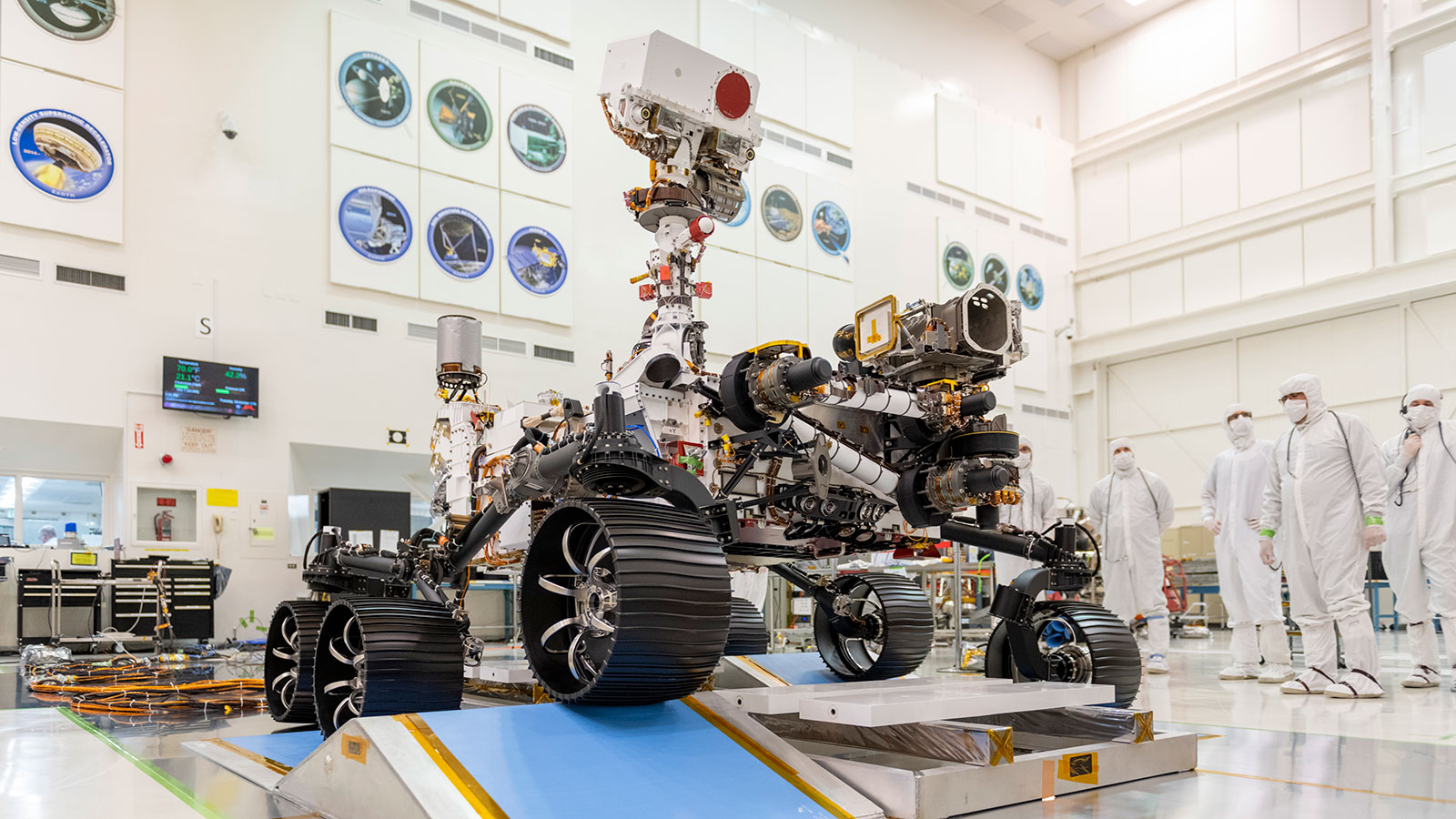
SpaceUpClose.com & RocketSTEM – 30 December 2019
CAPE CANAVERAL, FL – Just in time for the Christmas Holiday season NASA’s next Mars rover launching in July 2020 completed its first test drive as engineers at NASA’s Jet Propulsion Laboratory finalize the agency’s SUV-sized Red Planet explorer for it daring mission ahead.
Scheduled to launch as early as July 2020, the Mars 2020 mission will search for signs of past microbial life, characterize Mars’ climate and geology, collect samples for future return to Earth, and pave the way for human exploration of the Red Planet. It is scheduled to land in an area of Mars known as Jezero Crater on Feb. 18, 2021.
“NASA’s next Mars rover has passed its first driving test,” said NASA in a press release.
A preliminary assessment of its activities on Dec. 17, 2019, found that the rover checked all the necessary boxes as it rolled forward and backward and pirouetted in a clean room at NASA’s Jet Propulsion Laboratory in Pasadena, California. The next time the Mars 2020 rover drives, it will be rolling over Martian soil.
“Mars 2020 has earned its driver’s license,” said Rich Rieber, the lead mobility systems engineer for Mars 2020. “The test unambiguously proved that the rover can operate under its own weight and demonstrated many of the autonomous-navigation functions for the first time. This is a major milestone for Mars 2020.”
Video Caption: On Dec. 17, 2019, engineers took NASA’s next Mars rover for its first spin. The test took place in the Spacecraft Assembly Facility clean room at NASA’s Jet Propulsion Laboratory in Pasadena, California. This was the first drive test for the new rover, which will move to Cape Canaveral, Florida, in the beginning of next year to prepare for its launch to Mars in the summer. Engineers are checking that all the systems are working together properly, the rover can operate under its own weight, and the rover can demonstrate many of its autonomous navigation functions. The launch window for Mars 2020 opens on July 17, 2020. The rover will land at Mars’ Jezero Crater on Feb. 18, 2021.
“To fulfill the mission’s ambitious science goals, we need the Mars 2020 rover to cover a lot of ground,” said Katie Stack Morgan, Mars 2020 deputy project scientist.
Mars 2020 is designed to make more driving decisions for itself than any previous rover. It is equipped with higher-resolution, wide-field-of-view color navigation cameras, an extra computer “brain” for processing images and making maps, and more sophisticated auto-navigation software. It also has wheels that have been redesigned for added durability.
All these upgrades allow the rover to average about 650 feet (200 meters) per Martian day. To put that into perspective, the longest drive in a single Martian day was 702 feet (214 meters), a record set by NASA’s Opportunity rover. Mars 2020 is designed to average the current planetwide record drive distance.
Watch Ken’s continuing reports onsite for live reporting of the recent Starliner OFT mission launch at the Kennedy Space Center and Cape Canaveral Air Force Station.
Stay tuned here for Ken’s continuing Earth and Planetary science and human spaceflight news: www.kenkremer.com –www.spaceupclose.com – twitter @ken_kremer – email: ken at kenkremer.com
Dr. Kremer is a research scientist and journalist based in the KSC area, active in outreach and interviewed regularly on TV and radio about space topics.
………….
Ken’s photos are for sale and he is available for lectures and outreach events
Ken’s upcoming outreach events:
Jan 5: 7 PM, Quality Inn Kennedy Space Center, Titusville, FL. “SpaceX Starlink and In Flight Abort Test Starliner Launches Jan 2020.” Free. In hotel lobby. Photos for sale



